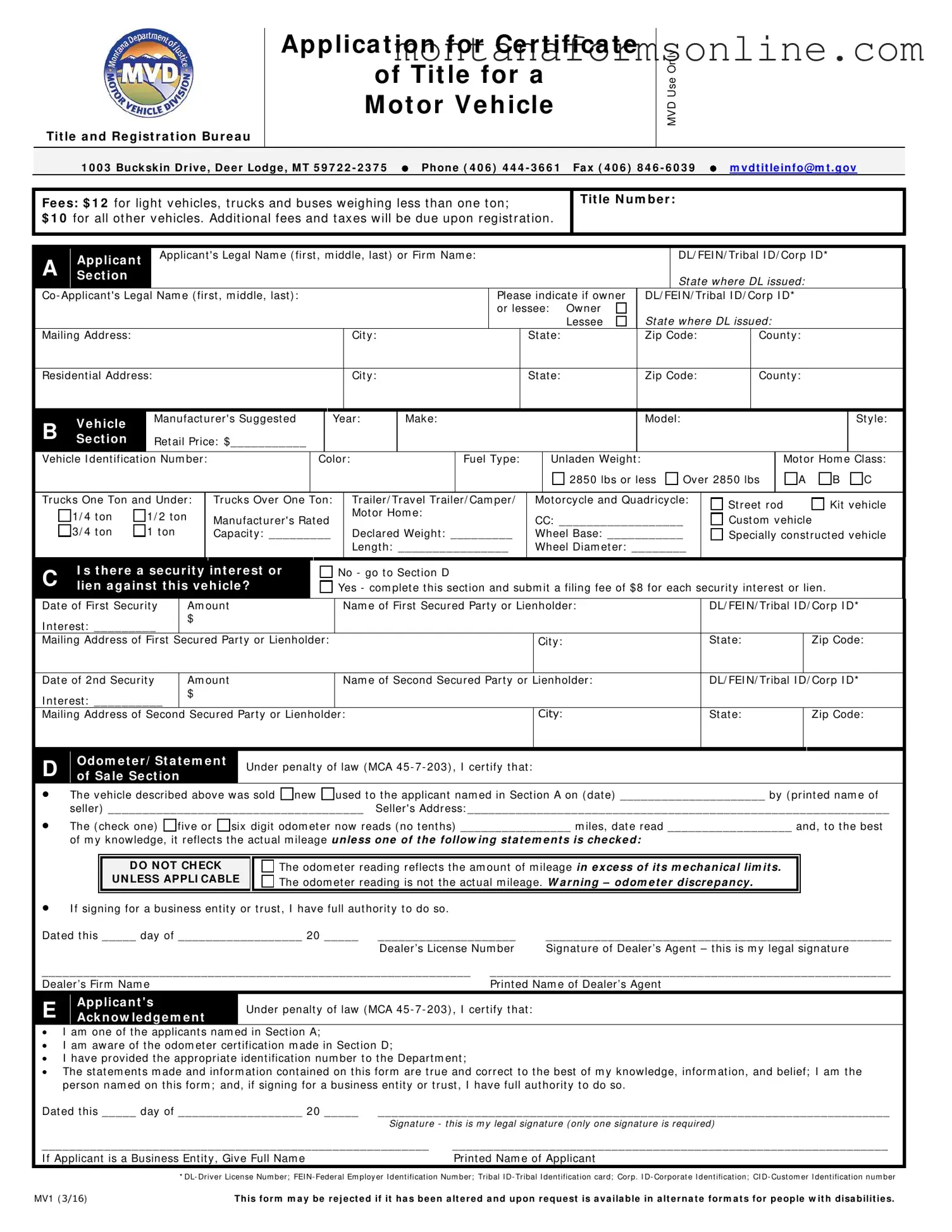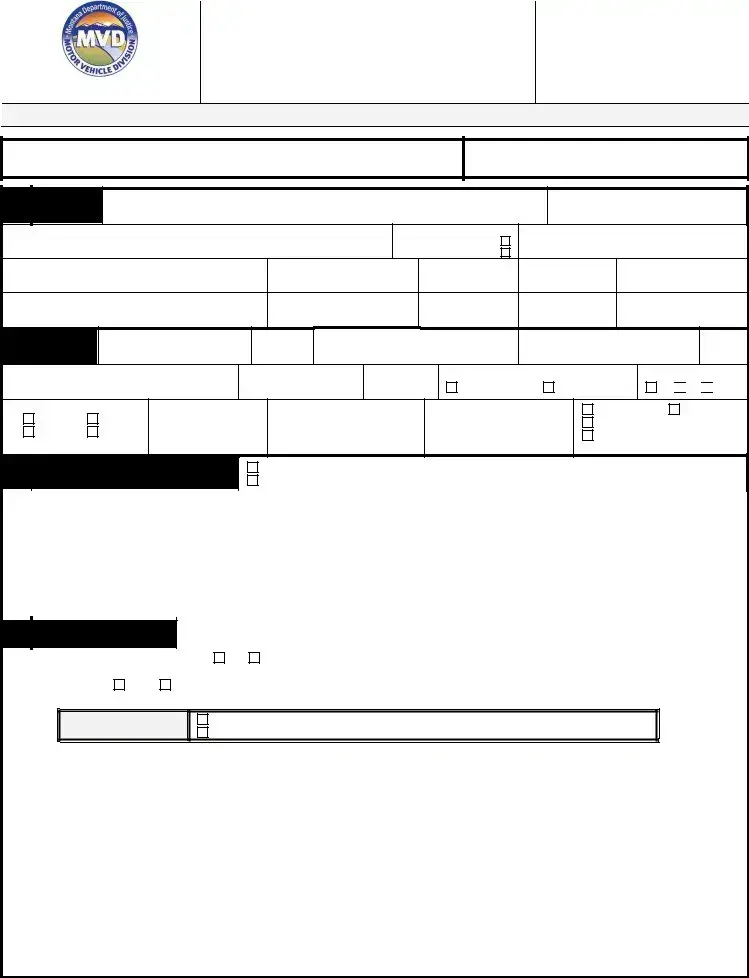The Montana MV1 form is similar to the Application for Title and Registration form used in many other states. This document serves the same purpose: to establish ownership of a motor vehicle and to initiate the registration process. Like the Montana MV1, it typically requires details about the vehicle, such as make, model, and VIN, as well as the applicant's personal information. The fees associated with title and registration may vary by state but are generally outlined in a similar format.
Another comparable document is the Vehicle Registration Application. This form is used to register a vehicle after purchase or relocation to a new state. Both the Vehicle Registration Application and the Montana MV1 require the same basic information about the vehicle and its owner. They also often necessitate proof of insurance and may include a section for lienholder information, ensuring that any financial interests in the vehicle are recorded.
The Bill of Sale is another document that shares similarities with the Montana MV1. This document serves as proof of the transaction between the buyer and seller. While the MV1 focuses on title transfer, the Bill of Sale confirms the sale and may include details like the sale price and date of transaction. Both documents are essential for establishing ownership and may be required during the title application process.
The Odometer Disclosure Statement is also relevant. This document is used to certify the mileage on a vehicle at the time of sale. Similar to the odometer section in the Montana MV1, this statement helps prevent fraud related to vehicle mileage. Both documents require the seller to disclose the current odometer reading and may include options for noting discrepancies.
The Lien Release form is another important document that parallels the Montana MV1. When a vehicle is financed, a lien is placed on the title until the loan is paid off. A Lien Release is necessary to clear the title once the debt is settled. Like the MV1, this form ensures that all financial interests in the vehicle are properly documented and can be crucial for future title applications.
The Application for Duplicate Title is also similar. If a vehicle owner loses their title, they can use this form to request a replacement. This document requires similar information as the MV1, such as vehicle details and owner identification. Both forms aim to maintain accurate records of vehicle ownership and facilitate the transfer of titles.
The Power of Attorney for Vehicle Transactions is another document that shares characteristics with the Montana MV1. This form allows one person to act on behalf of another in vehicle-related matters, such as title transfers. Both documents require detailed information about the vehicle and the parties involved, ensuring that the transaction is legally binding and recognized by the state.
The Articles of Incorporation form is essential for businesses looking to formalize their structure in California, ensuring that the corporation's name, purpose, and shares are clearly defined. To begin this process, you will need to print the document that serves as your foundation for legal existence as a corporation.
The Manufacturer’s Certificate of Origin (MCO) is also relevant. This document is issued by the manufacturer and serves as proof of ownership before the vehicle is sold. Like the MV1, the MCO includes essential vehicle information and is often required when registering a new vehicle for the first time.
Finally, the Vehicle Transfer Notification form is similar in purpose. This document is often used to inform the state’s motor vehicle department that a vehicle has been sold or transferred. It typically includes information about the buyer and seller, as well as vehicle details. Both the Vehicle Transfer Notification and the Montana MV1 play crucial roles in ensuring that ownership records are updated accurately and promptly.



 B
B 
 C
C